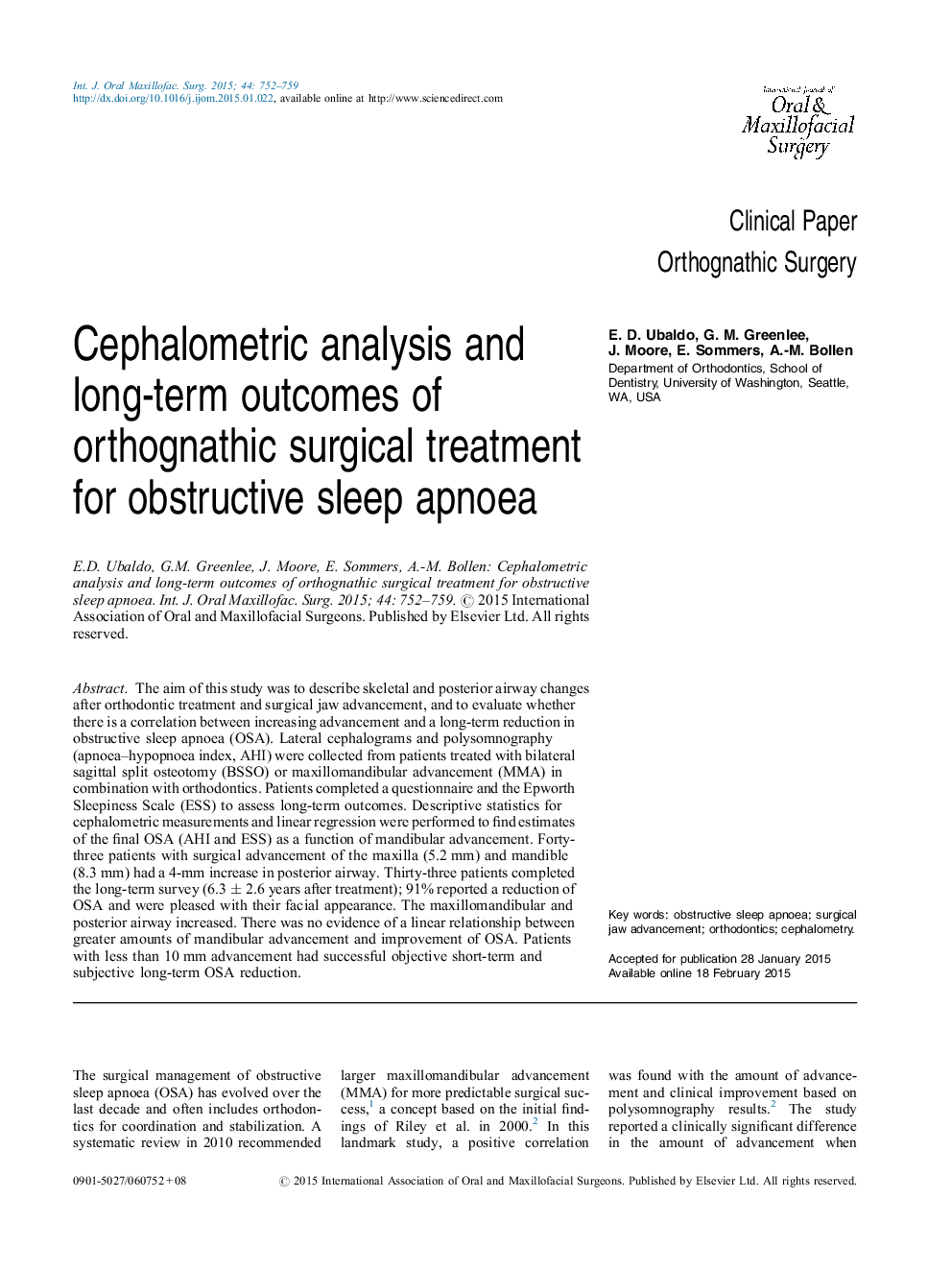| Article ID | Journal | Published Year | Pages | File Type |
|---|---|---|---|---|
| 3131916 | International Journal of Oral and Maxillofacial Surgery | 2015 | 8 Pages |
The aim of this study was to describe skeletal and posterior airway changes after orthodontic treatment and surgical jaw advancement, and to evaluate whether there is a correlation between increasing advancement and a long-term reduction in obstructive sleep apnoea (OSA). Lateral cephalograms and polysomnography (apnoea–hypopnoea index, AHI) were collected from patients treated with bilateral sagittal split osteotomy (BSSO) or maxillomandibular advancement (MMA) in combination with orthodontics. Patients completed a questionnaire and the Epworth Sleepiness Scale (ESS) to assess long-term outcomes. Descriptive statistics for cephalometric measurements and linear regression were performed to find estimates of the final OSA (AHI and ESS) as a function of mandibular advancement. Forty-three patients with surgical advancement of the maxilla (5.2 mm) and mandible (8.3 mm) had a 4-mm increase in posterior airway. Thirty-three patients completed the long-term survey (6.3 ± 2.6 years after treatment); 91% reported a reduction of OSA and were pleased with their facial appearance. The maxillomandibular and posterior airway increased. There was no evidence of a linear relationship between greater amounts of mandibular advancement and improvement of OSA. Patients with less than 10 mm advancement had successful objective short-term and subjective long-term OSA reduction.
